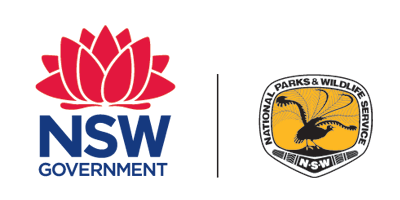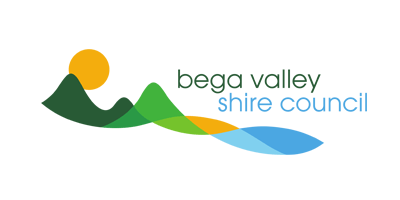nature & wildlife
Reconnect with nature along along dramatic cliffs, pristine beaches, rugged headlands and coastal lagoons. Walk through tall archways of honey myrtle, wander the undulating sand dunes of Bournda National Park and spot soaring white-bellied sea eagles as they fly overhead, scouring the seas for a tasty meal. Wharf to Wharf Walk passes through diverse natural landscapes and aquatic environments.
geography & geology
The Wharf to Wharf Walk features cliffs, rocky bays, deep clefts, beaches and lakes, that form a beautiful, interesting and in places spectacular landscape. Dissected Eden rhyolite formations dominate the cliff areas, overlaid by red and brown slates and sandstones and other sediments in places.
Elevated boulder beaches, which indicate previously higher sea levels, are also geologically interesting features. The beach/dune area is largely composed of siliceous sands and sandy loams. Grey sandy loams and alluvial deposits are the dominant soil types in the remainder of the foreshore area.
Wetlands are prominent and important features along this coast, functioning as natural filter systems and supporting fish and bird species breeding and feeding. It also attracts a wide range of migratory birds.
The beach and dune system is a key part of this experience, covering around one-third of the walk along Short Point / Tura Beach, North Tura Beach and Bournda / Wallagoot Beach. It is a natural feature of high environmental significance. A healthy and dynamic dune system plays an important role not only in maintaining the beach, but also as a natural buffer protecting other ecosystems.
flora
The vegetation along the Wharf to Wharf Walk is diverse, featuring areas of tall moist forest, open forest, rainforest, wetland, scrub, heath and dunes.
Tall archways of giant honey myrtle (Melaleuca armillaris) frame ocean and headland views as the trail winds along the coastal heath and dunes. Extensive areas of tall heath include common species such as old man banksia, stunted bloodwood, sweet wattle, drooping she-oak (casuarina), common aotus, tick bush and giant honey myrtle. In exposed areas a short heath of coastal wattle, coast banksia, coast rosemary, toothed daisy-bush, Sydney golden wattle, coast beard-heath, common heath and grass tree occur.
Foredune areas support mainly spinifex, tussock and pig face, with some marram grass. Small areas of sedgeland occur in poorly drained sections of heathland. These are dominated by sandhill sword-sedge, zig-zag bog-rush, grass tree, scented paperbark and blunt-leaf heath. Fresh and estuarine wetlands of rushes and sedges occur around the lakes. Species include saltmarsh, streaked arrow-grass, common reed. The largest wetland area is on the northern side of Wallagoot Lake near Turingal Head.
Through Bournda National Park open forest and woodland communities of bloodwood, silvertop ash, woollybutt, white stringybark, yellow stringybark, blackbutt, blue leaved stringybark and native cherry, are supported by shrubs such as sunshine wattle, spiny bossiaea, narrow-leaf geebung, black-eyed Susan and common correa. River oak (Casuarina) is found along the major creeks such as Sandy Beach Creek. An area of woollybutt, blackbutt, grey box, monkey gum and forest red gum occurs south of Wallagoot Lake.
Much of the forest along the walk was logged and regularly burnt prior to reservation and there are few large trees. Several areas along the walk have also been previously cleared for agriculture. These include the Scotts Bay and Bondi Lake areas, an area west of Wallagoot Gap and parts of the Kangarutha coastline. Many of these sites are regenerating naturally apart from the tree and shrub planting and picnic area maintenance at Scotts Bay, Short Point and Tathra Headland (from the 2018 Tathra fire).
Small patches of gallery rainforest occur along creeks, including Boulder Bay Creek, Games Bay Creek and Sandy Beach Creek. The major species are lillypilly, sweet pittosporum, bolwarra, common acronychia and sassafras. Ferns and vines are common and a variety of orchids occur.
Introduced plants infest small areas along the walk and include patches of bitou bush, fireweed, Paterson’s curse, sea spurge, tree of heaven, fleabane South African lovegrass, Paspalum, kikuyu and blackberry.
The Wimbush Digital Herbarium is a free online herbarium that allows you to search for plants in Bournda, based on the flowering colour and month of the year. It is hosted online by Bournda Environmental Education Centre.
birds
Roughly 200 species of birds have been observed in the region, including many species of waterbirds. The most common birds are resident and migratory shorebirds, waders and sea birds, taking advantage of the estuaries, sand flats and islands which provide year round habitat.
Soaring white-breasted sea eagles are a spectacular and common sight. Special care should be taken in avoiding the eggs of ground nesting coastal birds such as the Pied Oystercatcher and Red Dotterel (August to February), Little Tern (November to March) and Silver Gull (March to November). Sections of beaches at Short Point and Wallagoot beaches are often taped off to protect eggs during nesting seasons.
Other waterbirds include the black swan, musk duck, chestnut teal, eastern swamp hen, pied cormorant, eastern curlew, lesser golden plover, and ruddy turnstone. In addition, the following migratory birds have also been recorded: Bar Tailed Gadwits, Red Neck Stints, Knots, Ruddy Turnstones, Mongolian Dotterels, Sanderlings, Ruffs, Eastern Curlew, Double Banded Plover, Great Knott and Common Greenshank.
Forest birds - the yellow tailed black cockatoo, gang gang cockatoo, crimson rosella, common bronzewing, wonga pigeon, king parrot, brown-headed honeyeater, bell minor, brush cuckoo, pied butcher-bird and southern boobook.
Raptors - include the wedge-tailed eagle, brown falcon, whistling kite, grey goshawk and peregrine falcon.
Woodland and heathland birds - the striated calamanthus, emu wren, stubble quail, whitethroated needletail, Richards pipit, chestnut-rumped hylacola and tawny crowned honeyeater.
Species that are considered endangered or vulnerable are the Yellow-bellied Glider, Pied Oyster Catcher, Glossy Black Cockatoo, Swift Parrot, Hooded Plover and Little Tern.
For keen birdwatchers the
Far South Coast Bird Watchers have a publication and list of recommended bird watching sites and self guided tours.
more wildlife
A wide variety of animal species have been recorded in the area, including:
Native mammals - the eastern grey kangaroo, swamp wallaby, red necked wallaby, sugar glider, common brushtail possum, feather-tailed glider, pigmy possum, ring tailed possum, native rats. and wombat.
Reptiles - the death adder, red bellied black snake, tiger snake, diamond python, blue tongued lizard, water dragon and lace monitor.
Introduced animals - include rabbits, cats and foxes.
biological values
The moist forests of southeastern NSW and adjoining parts of Victoria are amongst the most diverse temperate moist forests in the world (Keith and Sanders, 1990). A large number of threatened, rare and biogeographically significant plant species have been recorded in the park and reserve.
These include the threatened species Bega wattle and matted bush-pea which occur in only a few locations in Bournda National Park, and the regionally rare or generally uncommon species slender violet-bush, creeping monkey-flower, coast daisy bush, Blakely’s bush-pea, sandalwood, common acronychia, forest red gum, blue box (Eucalyptus) and native quince.
Several species reach the limit of their distribution within the park or reserve. These are downy zieria and bower wattle at their northern limits, green spider flower (Grevillea), burrawang, native grape, hairy psychotria at their southern limits and flannel flower which appears to be a disjunct southern population.
The estuarine wetlands at the eastern end of Wallagoot Lake provide roosting and feeding areas for a large variety of waders and waterfowl including trans-equatorial species protected by international agreements. These include the little tern and pied oystercatcher. Other recorded animals listed under the Threatened Species Conservation Act include the hooded plover, sanderling, Australasian bittern, powerful owl, sooty owl, glossy black cockatoo, ground parrot, tiger quoll, brush-tailed phascogale, southern brown bandicoot, yellow-bellied glider, koala, long-nosed potoroo, common bent-wing bat and great pipistrelle.
Bondi Lake is the largest fresh water lake situated behind coastal dunes in the region and is an important habitat for waterbirds. The lake’s entire catchment is contained within the park and is relatively undisturbed. The lake provides a scientific reference point for ecological research.


